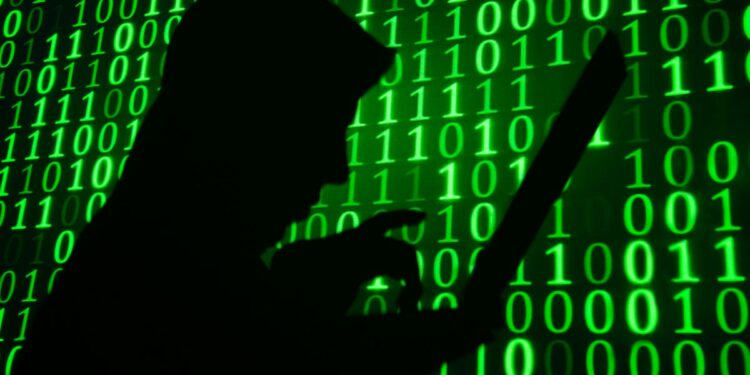One of the repercussions of America’s support for Ukraine is increased Russian aggression here at home — especially in cyber security. But one way this country can fight back is to use more onsite generation with microgrids. They can operate independently of the primary grid and outside the domain of electric utilities that are getting millions of phishing expeditions.
The American Jobs Plan, signed last November, pays for and trains workers to run wind and solar projects, build electric vehicle charging stations, and create energy-efficient homes and businesses. It also pays millions for cyber security. The president has said that he will treat cyber intrusions and ransomware attacks as a national security matter.
Indeed, the White House has twin goals: getting to 100% clean electricity by 2035 and a zero-emissions economy by 2050 while also protecting the country from foreign and domestic threats. Decentralizing the electrical infrastructure is compatible with both objectives.
“It’s a hedge against uncertainty,” says Tria Case, executive director for sustainability at the City University of New York. “Renewables and storage have proven themselves. While industries are thinking a lot about reliability, they are also making commitments around sustainability and corporate responsibility. The technologies are broadly applicable if you are risk-averse. Incentives are needed to make those investments financially prudent.”
Her comments came at a virtual conference hosted by Environment + Energy Leader and during a panel discussion moderated by this writer. The major themes to have emerged from the discussion are the kinds of businesses best positioned to benefit from distributed energy resources and the primary drivers causing them to deploy onsite generation, battery storage, and microgrids. It’s not just the onslaught of cyber attacks but it is also the increased level of aberrant weather conditions. Businesses need uninterrupted operations. But investments have to pay off.
Today, the bulk power system is comprised of roughly 10,000 power plants, 170,000 miles of high-voltage transmission lines, and nearly 6 million miles of low-voltage distribution lines. It also has more than 15,000 substations. The Brattle Group says that distributed energy resources can alleviate stress on the primary grid and meet 20% of peak load by 2030.
Does It Add Up?
California is expanding its use of distributed assets to protect against mass outages caused by wildfires. Puerto Rico has done so because a hurricane wiped out its electric network. As for Ukraine, the Russians have virtually and physically attacked its network and left its citizens without power. In this country, the Colonial Pipeline paid $5 million to Russian hackers.
Power companies are on guard, and they are developing robust systems that can continue to generate and deliver power whether they are hit with cyberattacks or high winds. A loss of electricity can also take out the drinking water system, the wastewater facility, and the communications infrastructure.
“What industry needs to consider is the business case behind decentralization,” says Jason Price, director of client engagement at West Monroe, during the symposium. “Is it economical? Does it meet the clean energy solutions companies seek? If you have onsite generation, you are an energy provider and can sell that back to the wholesale market. But is this the business you want to be in, or should you make your business more productive and leave this up to the utilities?”Utilities, after all, are laser-focused on reliability.
However, solar-plus batteries provide dependable backup electricity for critical businesses. And localized microgrids are effective at delivering the power. They can either operate independently of the primary grid or interconnect with it, drawing electricity from the utility when battery storage devices are empty. The software behind microgrids can have complete insight into the solar and battery capacity and can, therefore, avoid intermittency issues.
Utility regulators are trying to incentivize the growth of distributed assets. To that end, the Portland General Electric Company is deploying battery storage to battle high temperatures and wildfires. Its customers provide onsite power generation and microgrids — potentially as much as 39 megawatts of capacity.
It’s not just the private sector trying to avert wide-scale outages from climate events or cyber activities. It’s also the public sector. Charles Marshall is the energy director for the U.S. Department of Housing and Urban Development. He is working with a broad range of stakeholders, including housing authorities across the country. Among the issues that they discuss are the policy initiatives needed to encourage the build-out of distributed energy resources.
“The falling cost of renewables coupled with the pace of innovation is making these options more viable,” says Marshall, during the event. He points specifically to community solar projects, suited for those energy customers who are environmentally aware but unable to install solar panels. A third party will aggregate buyers and procure the power under a long-term power purchase agreement. “This enables us to invest in and build the infrastructure.”
Right now, 21 states and the District of Columbia offer community solar. That’s according to a recent report by the National Renewable Energy Laboratory, which says that the community solar market has been outpacing projections. For example, Ohio is considering a law to allow homeowners to buy clean energy without coming up with a hefty downpayment. However, they would be obligated to make monthly payments for as long as their contracts demand.
Distributed energy resources are changing the face of energy production and delivery. Reliability is driving the trend followed by sustainability and economic development. It may all make sense for risk-averse businesses — those trying to avoid cyber intrusions and the financial toll that such attacks can have.











